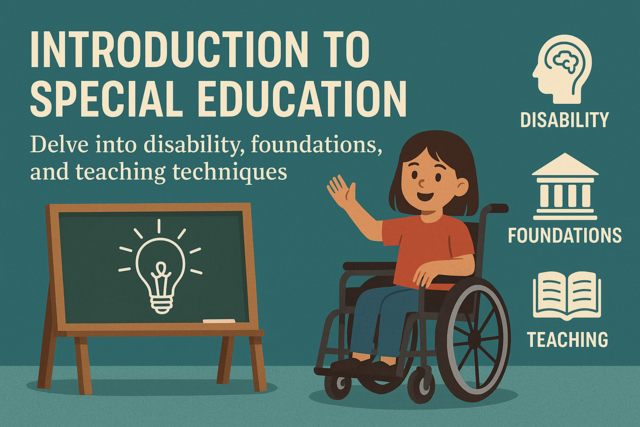Some educators choose to stick with one model that works for them. However, the greater majority combines the best of the methods to make a unique plan that works for their classroom and their circumstances. By using parts of several methods that you like, you can create a well-rounded classroom and discipline plan that will be perfect for your classroom. Not all teachers are comfortable using behavior modification, some are not "assertive" and would not feel confident using Assertive Discipline. Building your own plan allows you the flexibility to use only the methods that you are comfortable using. It is not difficult to create your own discipline program; it does require some planning on your part, though. It will require you to write down a solid outline that you can keep handy in your classroom. The reward, though, will be a plan that is tailored to your personality and your students' unique needs.
Combining Different Techniques to Create Your Own Program
- Behavior Analysis, a method that uses behavior modification to help students stay on task. Operant (daily behaviors) are analyzed and used to encourage better behavior in the classroom.
- Assertive Discipline, a method that puts "the teacher in charge" and asks them to be assertive in expecting a well-behaved class.
- Cooperative Discipline, a method that seeks to enlist the cooperation of students in the classroom. It focuses on the four main goals students have for misbehavior.
- Reality/Choice, a therapy that is based in the present circumstances and gives students a "choice" over their behavior and consequences.
- T.E.T., is a method based on relationships and owning/solving problems; it requires training to understand thoroughly.
- Democratic/Judicious Discipline uses constitutional rights and a democratic model. Students help set up the rules based on honoring everyone's basic rights and are involved in vetting consequences for breaking those rules.
- The Jones Method, is a three-part technique of body language, incentives, and individual help; it is very easy to implement, and has been used successfully by many high-performing teachers.
If creating your own unique plan is your goal, you should start by picking what it was you liked the best about several of the above methods.The best individual classroom management plan will use one primary method and have a second, or tertiary, back-up plan to fill in the gaps. For instance, The Jones Method might work well for most instances, however, it does not work well when the entire class is misbehaving, distracted, or off task, as happens when there is big news in the school, something important is going on in the world that impacts them, or when the school year is winding down to the last weeks toward summer break. Most teachers know this to be true. So, for some teachers, a good back-up like assertive discipline would be helpful for those times that The Jones is not getting the desired results. That is but one example. There are many combinations you can use, based on your needs, and those of your students.
Implementing Your Discipline Program
- Begin by choosing one "structure" method, or the one you would want to use daily, then pick one or two that would be good for back-up to fill in the weaknesses in your daily method. Do not over-complicate things by adding too many methods.
- Write down what you think the strengths are of your daily method and exactly how your back-up method will fill in the gaps. Later, once your plan is up and running, you can add parts of other methods as you see fit.
Tailored Discipline Plan Example:
For day-to-day classroom procedure, the Jones Method will work best for my fourth grade class. I will use the following plan for regular, business-as-usual school days:
1. Persuasive body language: I will use posture, direct eye contact, facial expressions, signals, and physical proximity to persuade my students to behave. The point of using body language is to avoid taking actions that will slow down or interrupt the lesson; it should be a quick, non-threatening method of getting the point across to my students.
2. Incentive system: I will provide rewards and/or recognition to motivate my students to stay on task and get them to complete work, and to not misbehave. I will use a class voted-upon incentive system to provide motivation to my students. For this to work best, I require my students' input so that I am sure it is something they will really look forward to enjoying, if they stay on task. These incentives should be something the entire class can enjoy, not just top performers. The incentives should not be stars and awards, they should be tangible treats and activities that all can participate in. Doing art work, playing a game, getting a snack break, getting to play outdoors, are some activities I can suggest to my students.
3. Individual attention and help: I will provide one-on-one help to my students so I can find and fix gaps or hurdles that may be keeping them from completing work. Giving individual help often fixes small problems and obstacles that are keeping a student from learning. I will pay attention to how they are executing specific tasks to ensure they are not missing any vital information that may be causing them frustration. I will then teach them the missing information and check back with them to ensure that they have "got it." I will not assume that a student is intentionally not staying on task, and remember that students are often too embarrassed to ask for help in front of their classmates. Also, they may be interrupting to create a distraction to "stall" completion and avoid confrontation.
For times when the Jones method is not suitable, such as extreme disruptions, times of excitement of a holiday or break, or high anxiety, I will utilize Assertive Discipline and some Democratic Discipline to fill in the gaps. I will do the following under circumstances in which the Jones method is not appropriate:
I will use the following AD techniques and mantras:
- I will not tolerate any student stopping me from teaching.
- I will not tolerate any student preventing another student from learning.
- I will not tolerate any student engaging in any behavior that is not in the student's best interest, and the best interest of his or her fellow students.
- Whenever a student chooses to behave appropriately, I will immediately recognize and reinforce that behavior.
- I am an assertive teacher and I am the "boss" in my classroom.
Using the Democratic Discipline method, I will:
- Have my students help me create the "class rules."
- Have my students help me create consequences for negative behavior for "group" bad behavior, and I will tell them clearly what the consequences are for individual bad behavior.
- I will follow through with consequences and not play favorites, be biased or inconsistent.
Keep your plan in mind throughout your day; if need be, keep it posted near your desk, so if you get frazzled or side tracked, you can refer to it. Most importantly, remember, teachers are human, too, and not perfect. The point of a good classroom management and discipline plan is to reduce distractions, increase learning time, and to create a pleasant learning environment for all -- teacher and students alike. There is no such thing as "perfect" follow-through and as you master your discipline method of choice you will become better at implementation over time.
Lastly, be flexible when creating your own discipline plan. If you choose one method, and it's not working as well as you had hoped, try another base method, or a different configuration of methods, until you find the system that works best for your personality and your unique, individual group of students.
Conclusion
Creating your own discipline plan can give you the benefit of using the best techniques of the best methods. It is important, however, to design these into a structured "plan" that you can master and implement. Simply flying by the seat of your pants and "throwing" methods out there will not create peace, it will make you look like you are not in control of the class and that you are unsure of what you should do. So, build a plan, write it out, explain to the class what your intentions are, be consistent and follow-thorough. Be flexible, if the plan you created is not working as well has you had hoped, "tweak" it into the plan you need.
All student populations are diverse in some regard. Even if you have a classroom of students who are entirely black, or entirely white, or entirely Hispanic, or entirely Asian -- at the very outside you will have both male and female students; or, if in an all boys or all girls school, you will have students of different ethnicities, cultures, social classes, lifestyles, and/or religions. Student diversity is ever-growing, and homogeny has all but disappeared in our 21st century world. Educators must allow for the unique challenges that diversity brings to their management and discipline plans. It is no longer only urban areas that attract a rich, diverse student population. It is in the best interests of all students to get along with, accept, and learn from people whose ethnicities, races, religions, lifestyles and/or socio-economic circumstances differ from their own.
Overview
Addressing Issues Unique to Individual Differences
If you are unclear about how a student's unique circumstances need to be addressed within the confines of your classroom, ask the student to give you examples of their particular needs, or ask the parents to provide a list of how you, the class, (or school) can accommodate the unique needs of the student. You do not have to alter your entire curriculum for any one student, or even a group of students, if it serves the greater good. In situations of non-participation due to religious or other beliefs, have the student give specific topics they may not participate in, and also have them offer alternatives to replace the work or assignment that the rest of the class is doing.
Depending on the age of your students, it would help to teach about differences in the classroom. Fostering an atmosphere of tolerance and acceptance starts with you; you set the stage for the behavior of the class. A good way to introduce "difference" is to allow the students to present to the class who they are, and what that means. For instance, you could have a cultural day, where each student brings in something to share with the class that is specific to their culture. This can also be done with race and religion. This allows students to "explain" to their fellow classmates what it means to be who they are. It will help dispel myths and propaganda, and give all students a broader, deeper understanding of students different from them.
Being Sensitive to Differences While Maintaining Discipline
When setting up/voting on the class rules, be sure to get the input of all students; likewise, when planning consequences, keep in mind the limitations that some students may have. Perhaps you have older students who must care for younger siblings after school, it would cause extreme duress to the student and the student's family to issue an after-school detention for that student. You will have to present an alternate, but equal discipline method; assign an essay, a lunch detention, or a special project, instead. If you have a student with a physical handicap, adjustments may have to be made to his or her consequences. Does this mean that students with special circumstances should not have to suffer consequences for misbehavior? Absolutely not, in fact, that in itself would be discrimination and highly unfair to the rest of the class. Treating a student with "kid gloves" because they have special circumstances will certainly embarrass them and will not serve their emotional maturity in the future. The point is to discipline equally, while working around their circumstance.
Conclusion
All classrooms are diverse in one way or the other. Working special circumstances that come with a diverse student population into your classroom management and discipline plan will serve you well, and will help you be prepared for potentially sticky situations before they arise. Having students "present" their unique difference to the rest of the class is a great way to inform and educate. It is also a great way to remove barriers that are caused by fear or ignorance. It is important to discipline students with special circumstances, because doing otherwise is equivalent to stigmatizing them. However, discipline must be slightly tailored to address their situation.






















